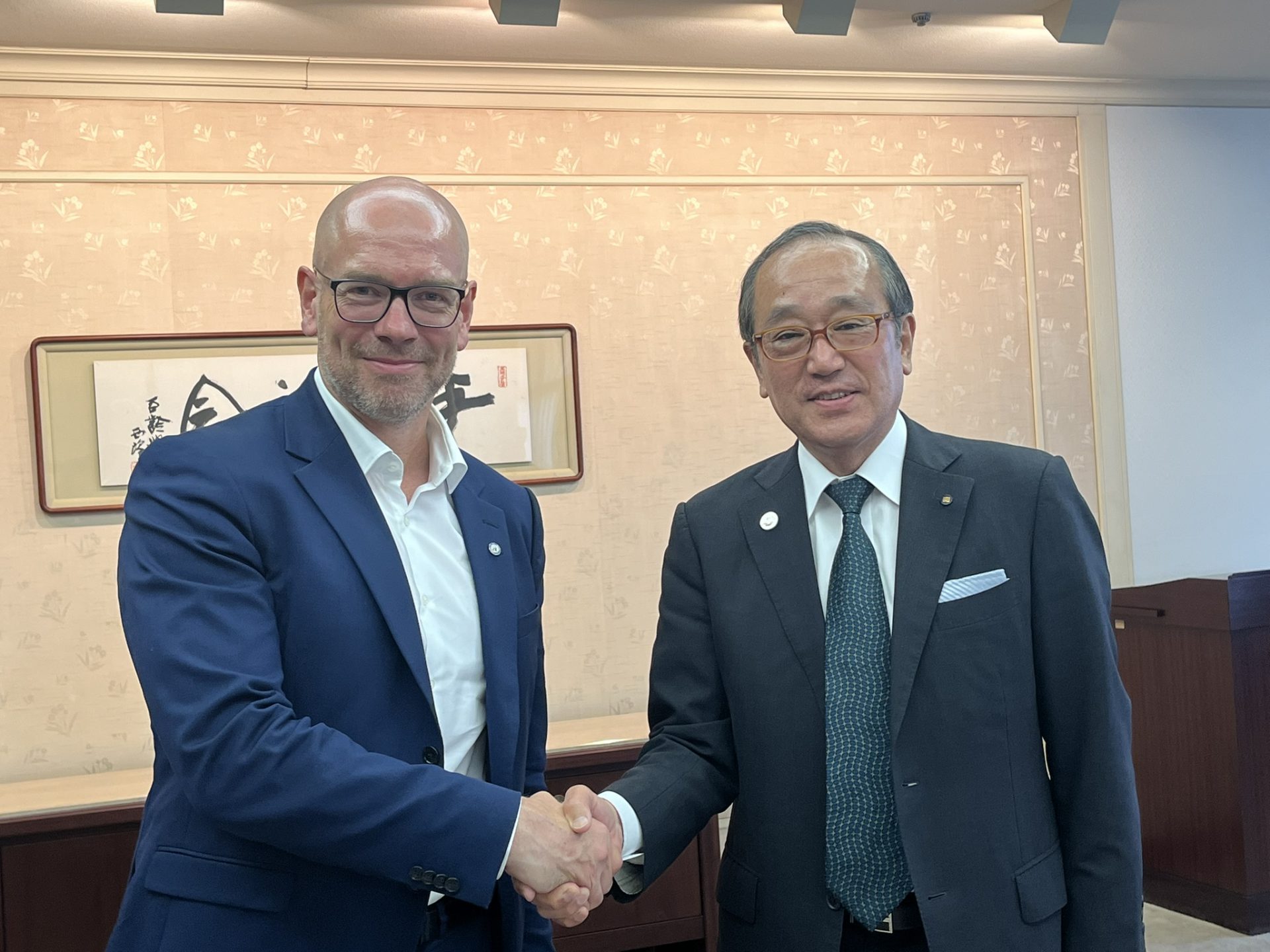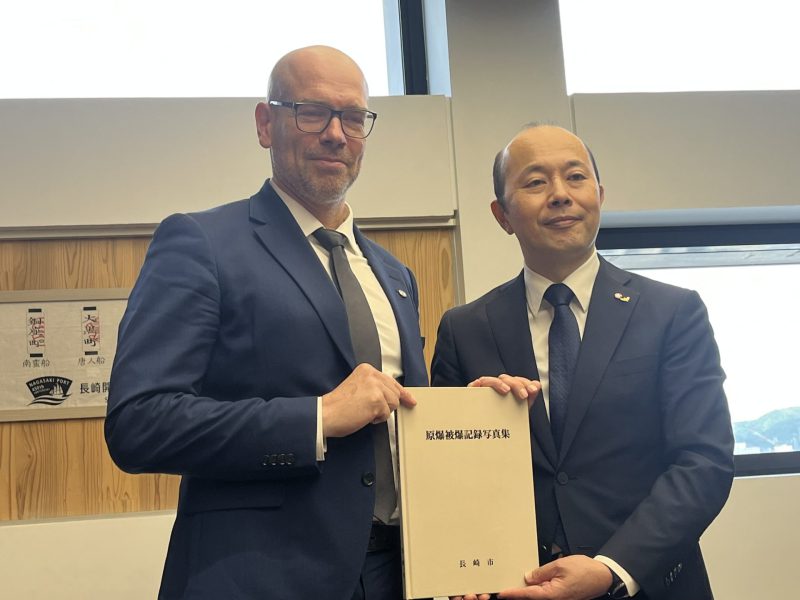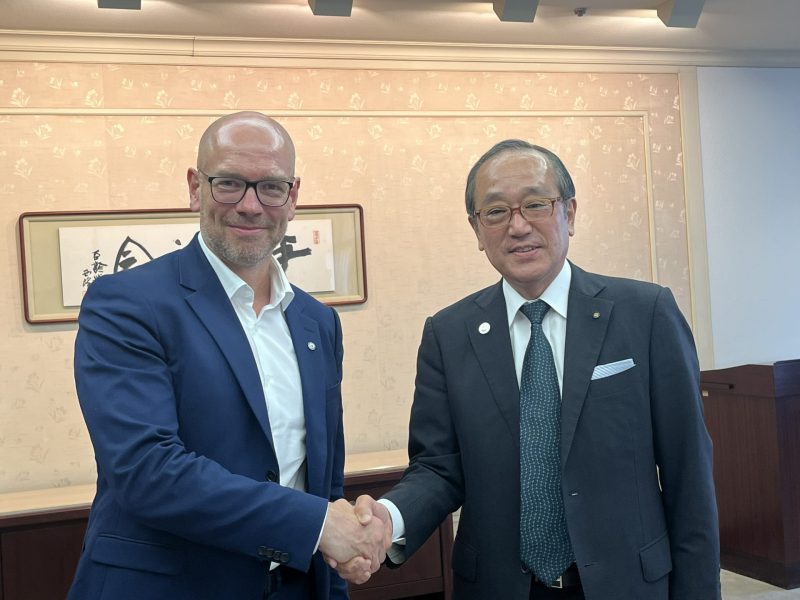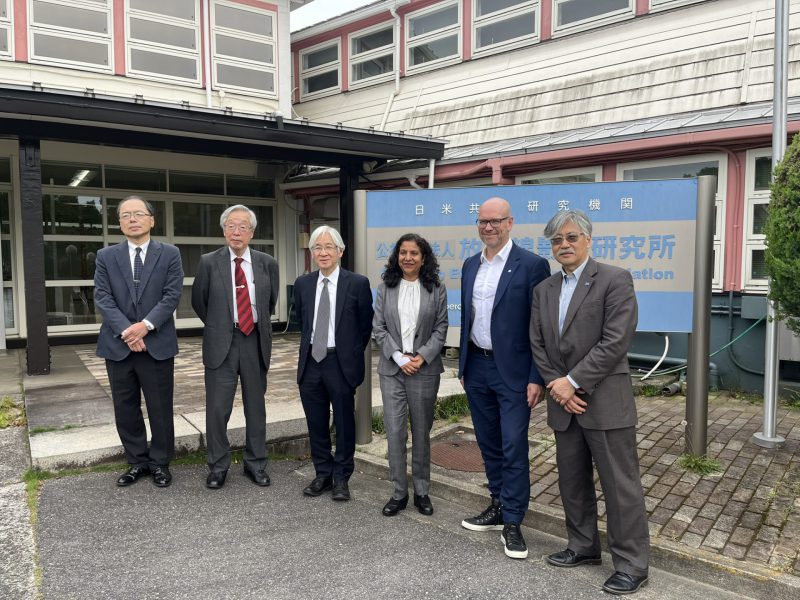Report by Mr. Tsutomu (Tom) Kono, Executive Advisor, Hiroshima Peace Culture Foundation
From May 18 to 24 this year, Dr. Robin Geiss, Director of the United Nations Institute for Disarmament Research (UNIDIR), visited Japan. Since its establishment at the First Special Session of the United Nations General Assembly on Disarmament (SSOD-I), the Institute has been the UN’s only disarmament research institute and has been conducting independent research on pressing issues in disarmament and international security for 45 years. Having worked for the UN Office for Disarmament Affairs for decades, I have been working as a UNIDIR Fellow since April last year.
This year marks the 80th anniversary of the atomic bombings of Hiroshima and Nagasaki. Therefore, I strongly recommended that Dr. Geiss take this opportunity to visit Japan, and I accompanied him on this visit. In particular, it was an important objective of this visit to deepen his understanding of the reality of the atomic bombings by visiting Nagasaki and Hirosima – which symbolize the effects of nuclear war — and to ensure that the legacy of these tragedies is reflected in today’s disarmament efforts.
First, Director Geiss paid a courtesy call to Ms. Eri Arfiya, Parliamentary Vice-Minister for Foreign Affairs in Tokyo, and met with senior officials of the Ministry of Foreign Affairs, including Dr. Kimitake Nakamura, Director-General of the Disarmament, Non-Proliferation and Science Department, to discuss collaboration between UNIDIR and the Japanese government. He also exchanged views with Dr. Kuniko Inoguchi, Member of the House of Councillors and Chairperson of the Japanese Parliamentary League for Disarmament, and another member of the House of Councillors, Mr. Daisaku Hiraki of the Komeito Party. Dr. Geiss participated in a symposium on emerging technologies and space security at the United Nations University. He also discussed the impact of emerging technologies such as AI on disarmament and security issues with experts at a roundtable organized by the Japan Institute of International Affairs.
Dr. Geiss then travelled to Nagasaki, where on 22 May he paid a courtesy call to Mr. Shiro Suzuki, Mayor of Nagasaki at Nagasaki City Hall. They exchanged views on strengthening the partnership between UNIDIR and the City of Nagasaki and promoting joint research toward the abolition of nuclear weapons, while confirming their shared commitment to a peaceful and nuclear-weapon-free world.
Dr. Geiss also visited Nagasaki University, where he met with President Takeshi Nagayasu and Dr. Fumihiko Yoshida, Director of the Research Center for Nuclear Weapons Abolition (RECNA), to hear explanations about the university’s peace education and its achievements in joint research, and to discuss strengthening future collaboration between UNIDIR and the university. UNIDIR and RECNA signed a memorandum of understanding last year. Dr. Geiss met with researchers and students from the Center, and spoke, at a public lecture hosted by RECNA, on the importance of dialogue in peace and disarmament. UNIDIR is committed to promoting meaningful dialogue, which was at the heart of Dr. Geiss’ visit to Nagasaki. He emphasized that dialogue is essential in the midst of rising geopolitical tensions and tenuous diplomatic communication between nuclear-weapon states. He stressed the need to foster dialogue in which one can truly hear voices across generations, cultures and ideologies.
During the last days of his visit to Japan, Dr. Geiss visited Hiroshima and met with Mr. Kazumi Matsui, Mayor of Hiroshima, at Hiroshima City Hall on May 23 to explore opportunities for collaboration between Hiroshima and UNIDIR. Mayor Matsui proposed that Hiroshima be used as a base of operations for UNIDIR to conduct and promote joint research and education in the fields of peace and disarmament. Attending this meeting, I felt a shared mission to turn the memory of the war into a foundation for peace for future generations.
Dr. Geiss also visited the Radiation Effects Research Foundation, a joint U.S.-Japan research institute, where he was briefed on the results of the institute’s ongoing research into the impact of the atomic bomb on victims after the war, and explored the possibility of future collaboration with the Foundation. He also visited the Hiroshima office of the United Nations Institute for Training and Research (UNITAR), where he met with Director Chisa Mikami and other UNITAR staff to discuss the office’s activities and collaboration with UNIDIR.
Thereafter, Director Geiss delivered a lecture on peace and security with an eye to the future at a public event for students organized by the Hiroshima Platform for Peace Studies and Education (HPP). He explained the current state of nuclear disarmament in the world from the perspective of UNIDIR and emphasized the significance of Hiroshima, the first city that suffered an atomic bombing, conveying the reality of the bombing. He also met with professors and researchers from local universities, including Prof. Ryo Oshiba, Director of the Hiroshima Peace Institute of Hiroshima City University, and exchanged a wide range of views on cooperation in research and education in the fields of peace and disarmament.
Dr. Geiss was also eager to understand the reality of the atomic bombings in Nagasaki and Hiroshima, learning in detail about the atomic bombings and their effects in these cities through numerous exhibits, photographs and models at the Nagasaki Atomic Bomb Museum and the Hiroshima Peace Memorial Museum. Dr. Geiss was also deeply moved by testimonies on the atomic bombings. He listened to the story of Mr. Seiichiro Mise’s experience of the atomic bombing in Nagasaki. He also met Mr. Shigeaki Mori and his wife Kayoko in Hiroshima. The meeting with Mr. and Mrs. Mori was particularly meaningful for Dr. Geiss, as UNIDIR hosted a screening of the documentary film “Paper Lanterns,” which chronicles Mr. Mori’s decades of work identifying the 12 American POWs who were killed in the atomic bombing in Hiroshima, at a side event of the Second Session of the Preparatory Committee for the 2026 NPT Review Conference held in Geneva July last year.
Although his stay was only for one week, it was Director Geiss’ first visit to Japan, and he was able to visit the sites of atomic bombings, meet with survivors, and deepen his understanding of the reality of the bombings. This visit provided an opportunity for him to recognize that the tragic experiences of Hiroshima and Nagasaki continue to be a driving force behind global efforts toward nuclear disarmament. I believe that this experience has given Director Geiss a strong sense of UNIDIR’s mission of contributing to international peace through research in the fields of disarmament and security.
Photos: courtesy of Mr. Kono, Executive Advisor





